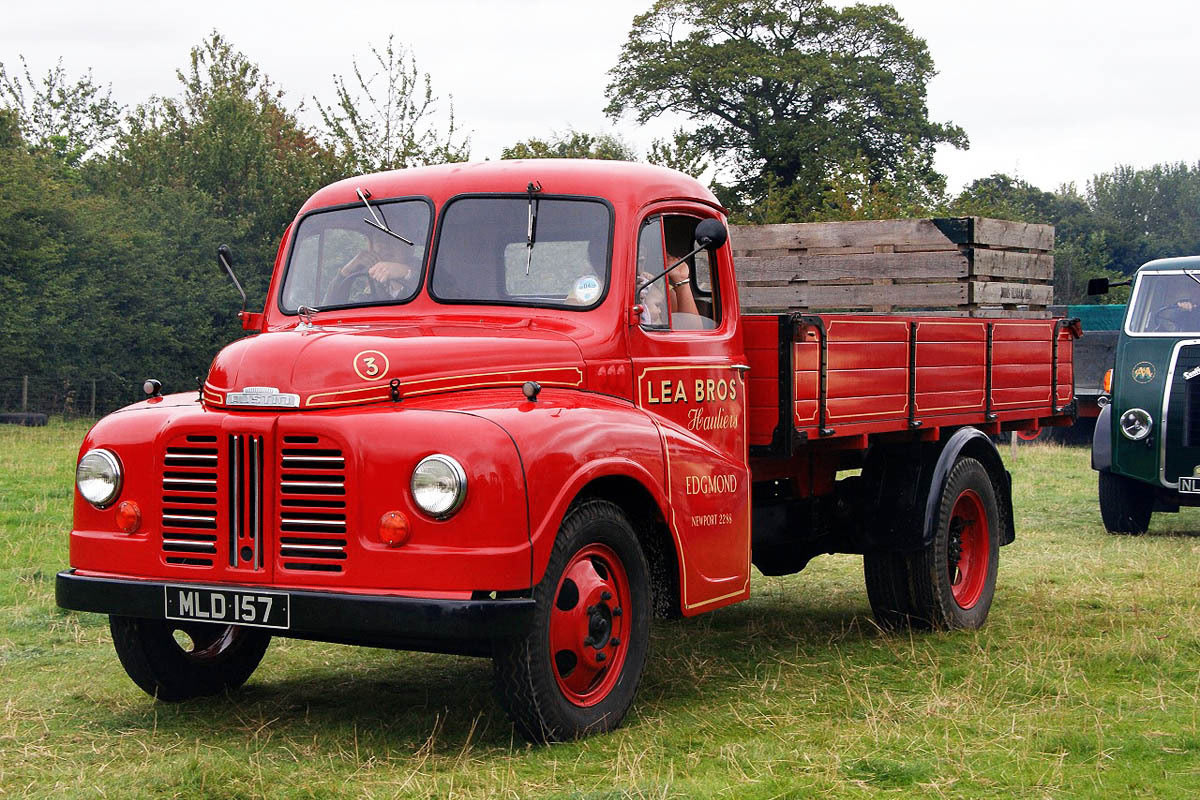My assessment on the Volvo cab is certainly based on circumstantial observation and not on clear facts. I’d love to find a brochure or an article that clearly states the coachbuilder, but since Poeze was the only one using that particular cab, my hopes are low. It also speaks for a local coachbuilder if you don’t find any others. But like I said, circumstantial, that’s why I call it a working theory.
I’ve been researching Dutch coachbuilders for about two years now and it’s not as straight forward as just comparing trim and detail. That works on many occassions, but on the other hand, with these one-offs the customer always had the last word and copying from others wasn’t really as frowned upon as it is today, everybody did it in some way. If you consider how many different cabmakers there were and that you can only trim out a shoebox so many ways, there’s no wonder if they had a look on what worked for others and got a little inspiration there.
An example:
These are both Scanias with a Van Beurden cab. Both from about the same period and you just couldn’t tell by comparision alone.
But if you look on a broader scale for the full picture, a story evolves. Have a look at this bus featuring a König body:
And if you look at this other Van Beurden cab, you can see how both cabs could have emerged from one design:
And here’s the kicker, König’s workshop was more or less just around the corner from Van Beurden, both in western Den Haag. It always helps to investigate the regional aspect. If you find a Van Beurden cabbed lorry, the owner was in all likelihood Den Haag based also. Check all your photos of Dutch lorries and crosscheck the company’s addresses with Google maps, you’ll see a clear picture emerging. You’ll rarely find a cab that wasn’t built locally, and if you do, they usually are second-hand. Researching that way also doesn’t solve every case, but it gives you a whole lot more dots to connect than just “comparing fenders”. It certainly helped me with the research looking at all these angles. In a way, it really is detective work.
What gives me certainty on my approach on this example is that you can find both cabs on the historic section of the Van Beurden web page. Also most Van Beurden cabs are badged, you normally find it in front or behind the door on the trim level. Once you get on track to the big picture, it’s also easier to sift out the hearsay and lay it to rest. I remember that second cab being identified as Verheul made here or in some other thread, but it’s not, no matter how nice the chromed V in the grille reminds anyone of that maker. By that logic all the König bodied buses must have come from Verheul as well. So don’t get too hung up on one small detail.
Given all that, I would argue against a Paul cab on the Volvo. Regionally speaking, it doesn’t make a lot of sense. Could still be, though. But also, the general design cues aren’t on par with all the Paul cabs that I know, except for the fenders. But then again, you find those fenders only on Volvos anyway. So it might be more of a Volvo thing, than an intentional design cue of the cabbuilder. Have a look a these Paul cabs that aren’t put on Volvos:
That’s why I would argue against Paul. It doesn’t make a lot of sense over all. The only dot is really the fenders, and I wouldn’t call them especially intricate or inimitable. It’s not like it takes a once in a lifetime genius to come up with that design. And even if, it’s not hard to just copy it. At that time, the rounded cabs fell out of fashion and everybody made things a little boxier and cleaner.
But speaking of Paul, here’s another Scania that doesn’t fit the bill:

You can clearly see the Paul logo in the last picture, if you squint you can even read the Paul name. That cab design was clearly a facelifted carry-over from Paul & v. Weelde:































